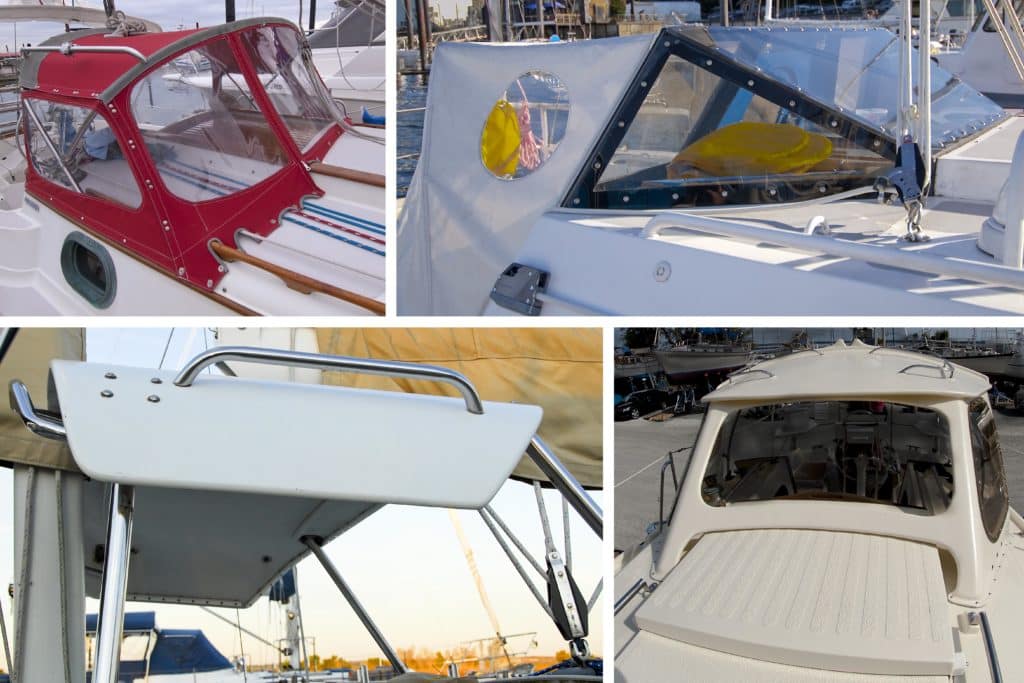
Since dodgers first appeared on yachts in the 1950s, these little tents over companionway hatches have come a long way, from simple “pram hoods” — a term still popular in the United Kingdom — to complex structures resembling waterborne Conestoga wagons. A good dodger does wonders to protect a watchkeeper from nasty weather. The hard part comes when a dodger designer tries to combine all-around protection for the crew with access to cockpit winches.
All too often, dodgers built for boats sailing south through cold weather grow into complete cockpit enclosures that don’t allow enough space to swing winch handles when trimming sheets. It’s best to discuss all the nuances of boat operation with the dodger maker, or even consult a sailmaker for advice. The accompanying photographs show many clever takes on good seagoing dodgers.
Creating a cockpit dodger starts with shaping and installing a framework of tubing. The most popular dodger type is made of fabric stretched over a framework of 7⁄8-inch or 1-inch tubing. Creating a solid frame anchored around the cockpit with strong bases is the first and perhaps most important step. Boats heading offshore must use the heavier 1-inch tubing. The fabric over the frame will have panels of flexible, clear PVC to provide visibility forward and to port and starboard.
On boats planning to sail in warm weather, these window panels should have zippers around the edges so they can be dropped or rolled up, permitting the breeze to flow freely and cool the space under the dodger. For cold-climate cruising, many sailors opt to install fixed dodgers. To keep weight down, such dodgers are usually made of a fiberglass skin shaped over a foam core that provides the desired shape.
Planning to sail in the higher, cooler latitudes but also enjoy tropical destinations? Cut openings in the fixed dodger to install lightweight, hinged hatches that will open or close as the weather demands.
To my mind, a semirigid dodger is the best model for all-seasons sailing. It has a fixed, rigid roof that sits on tube legs, as well as side panels of fabric and clear PVC that can slide into aluminum channels in the edges of the roof and the cockpit coamings. The sides of the dodger can be designed to roll up or even slip off entirely when sailing in benign climates; the permanent roof provides shade. Another good thing about this semirigid setup: It’s very easy and inexpensive to replace the soft side panels when they get old.
The vast majority of yachts keep their dodgers in place all the time. This often obstructs the view from the helm, which can be a real pain when docking. On our Mason 44, we built a dodger frame that can be easily dropped down and flattened by pulling out a couple of quick-release pins. This makes maneuvering in tight spaces much easier. In the far north, where we spend our summers, we put the dodger down and out of the way so we have a good view of any threatening ice as well as the abundant wildlife: polar bears, seals, whales and seabirds. Naturally, the dodger goes back up when the spray starts to fly and the cold wind begins to sting.
Material Matters
Building a custom dodger requires a good deal of attention to detail and a high degree of canvas work skills. And it’s not an inexpensive project, with the fabric being one of the costlier items. Custom canvas shops typically employ a grade of Sunbrella with middle-of-the-road longevity of about five to six years. But Sunbrella fabrics come in various grades; the best may last up to 10 years. Obviously, if you use your boat often, it’s wise to choose fabric with the greatest longevity.
Thread is also important. Normally the somewhat UV-protected standard thread that canvas shops use to sew a dodger will deteriorate in four to five years due to UV damage. Whether building the dodger yourself or commissioning one from a canvas shop, it’s well worth the cost to use a very sturdy PTFE thread, like Gore Tenara.
There are also ways to keep the costs of a dodger reasonable. The owners of some popular production boats can save money by ordering pre-cut dodger kits from outfits like Sailrite (sailrite.com). Sailors handy with sewing machines can buy the Make Your Own Dodger DVD from Sailrite and have a go at it themselves. We followed that path, and while the fabric on our dodger isn’t as drum-tight as on others built by professionals, it has stood up to some nasty weather for the last five years. We did have to restitch it, which we did with Tenara thread. To build up courage for a DIY dodger project, one can also turn to YouTube and learn the tricks of the trade from experts, as well as how to avoid various mistakes other amateurs have made. There are lots of little custom items you can add to personalize your dodger: a secret pocket for keys, for instance, or compartments for sunglasses, a flashlight or a sharp knife for emergencies.
A dodger is your friend, so when the fabric starts leaking, give it a face-lift with one of the available waterproofing compounds. Starbrite PTFE compound gave our Sunbrella dodger about a year of protection from leaking.
Here are some options to consider when looking for the right dodger for your boat.
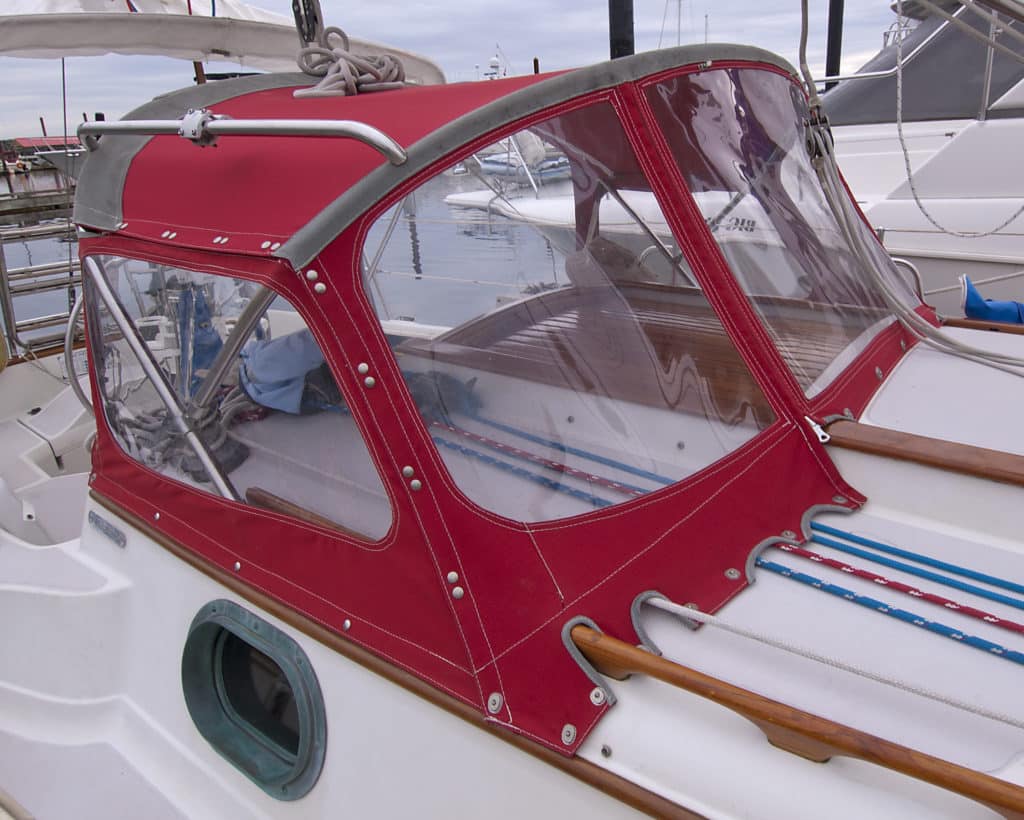
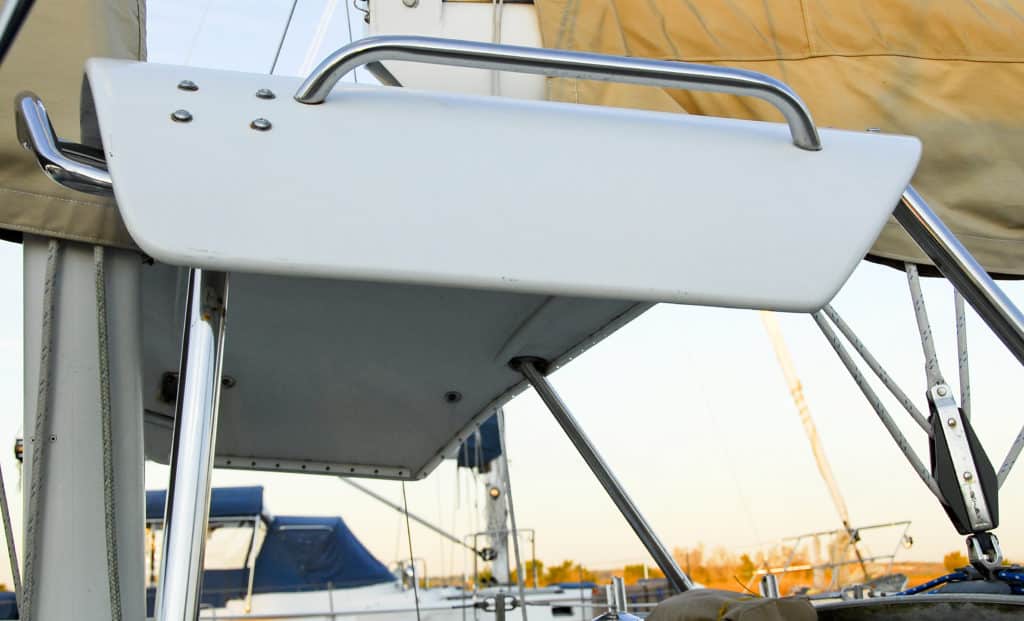
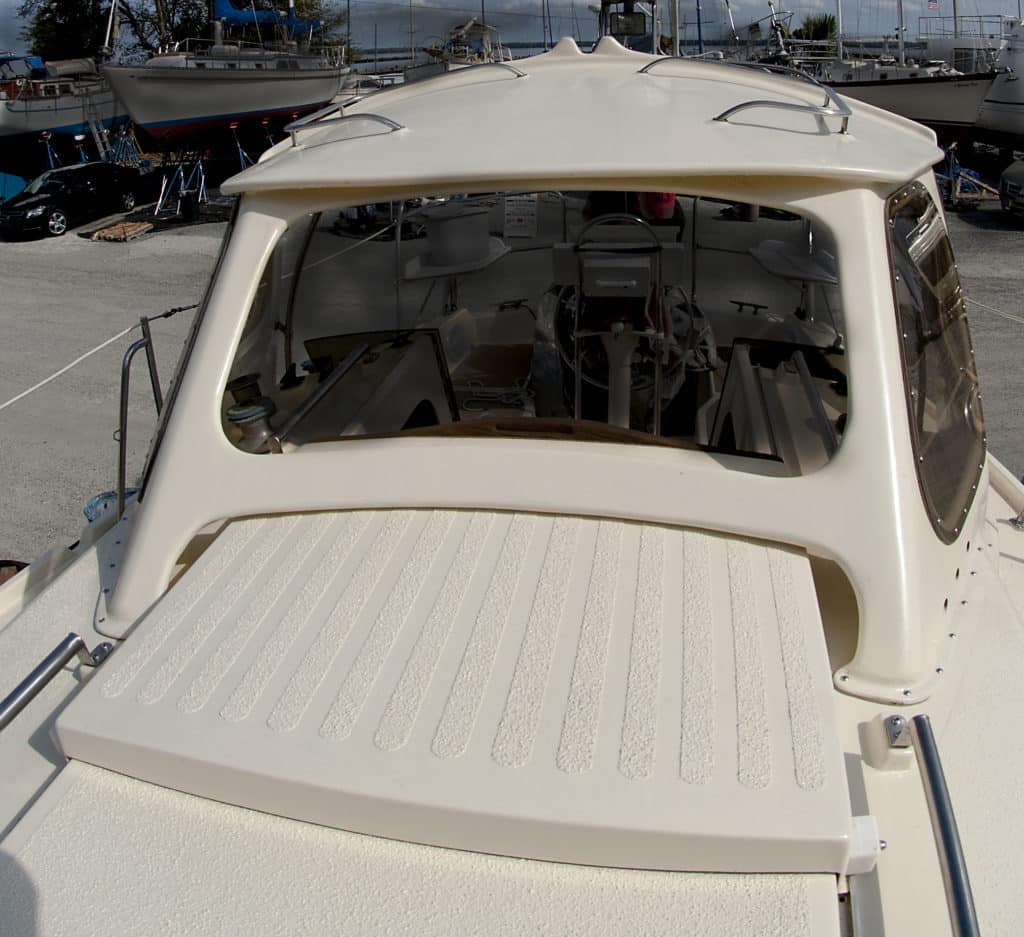
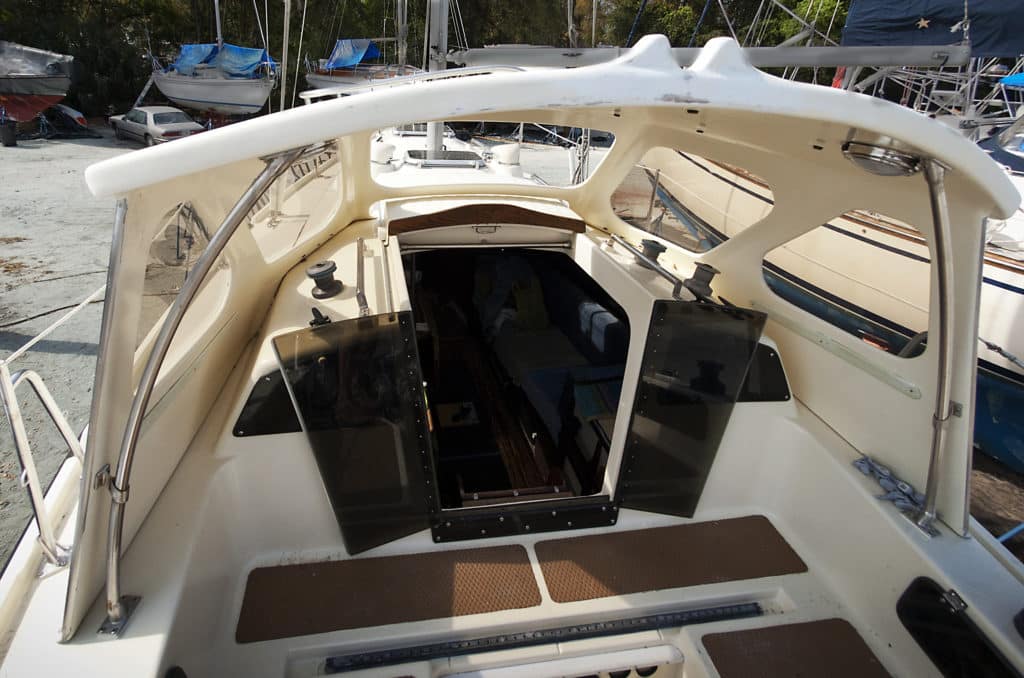
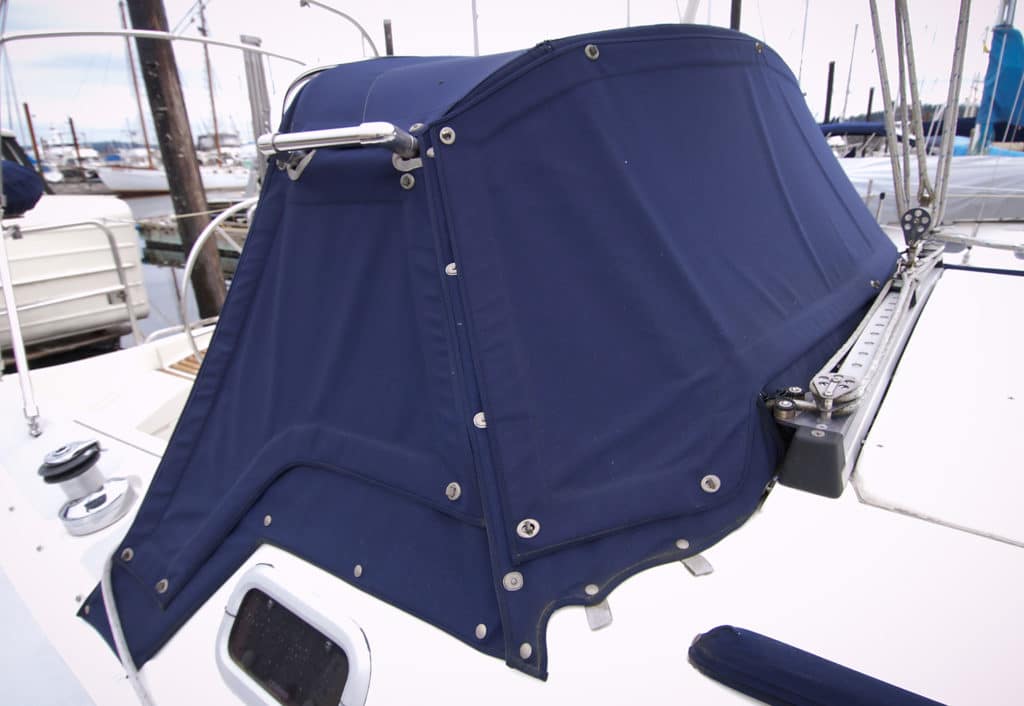
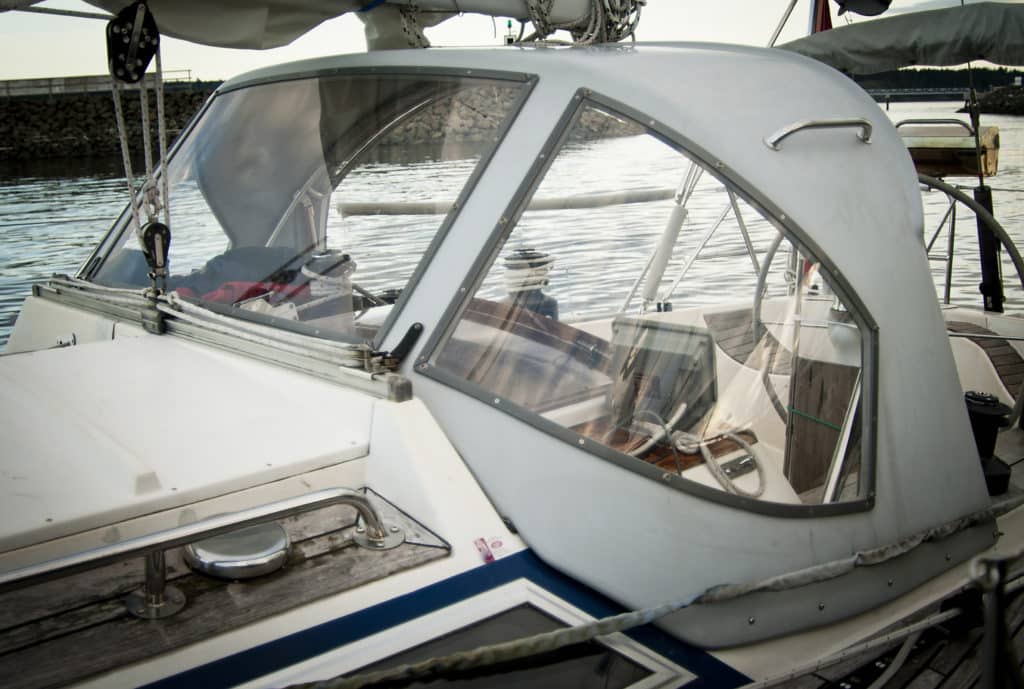
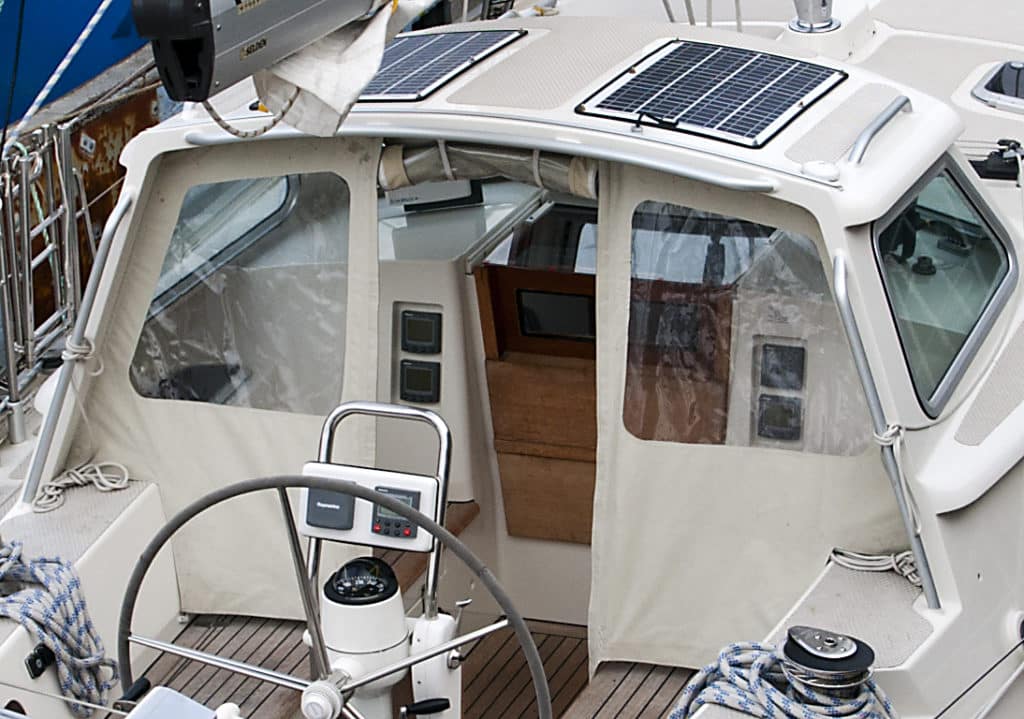
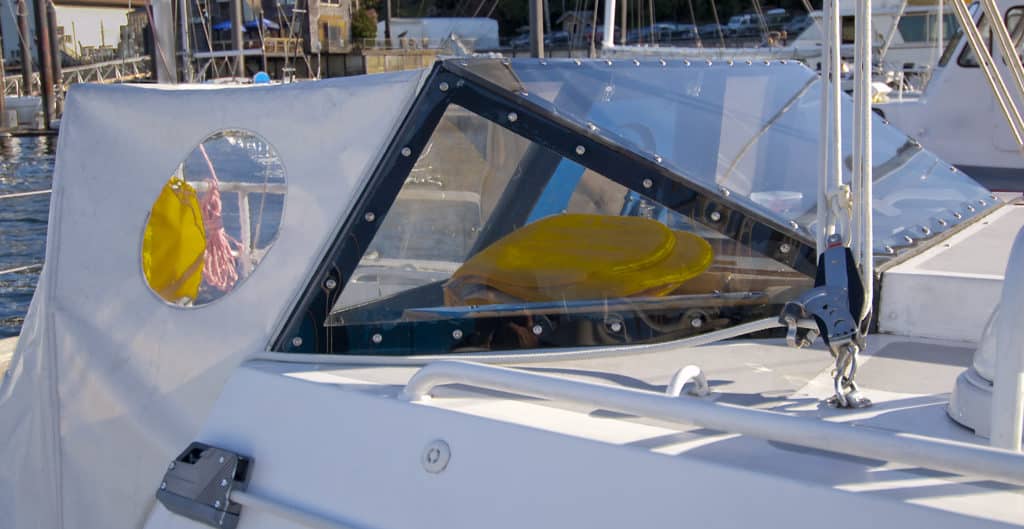
This summer, Tom and Nancy Zydler plan to sail their Mason 44, Frances B, through Baffin Bay up the west coast of Greenland. They will head as far north as the ice will allow.








